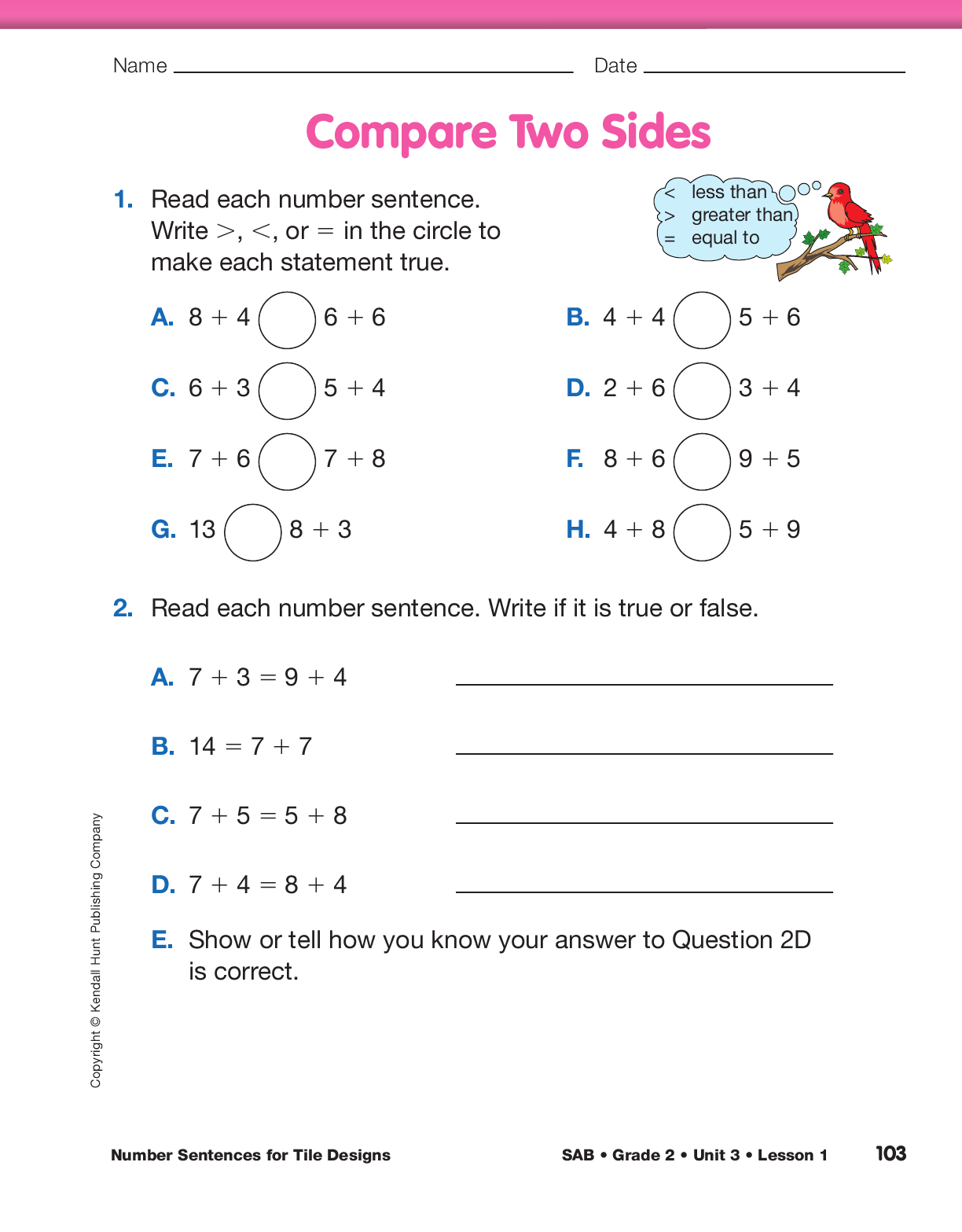Number Sentences for Tile Designs
Est. Class Sessions: 2Developing the Lesson
Part 2: Use Symbols to Compare Number Sentences
Write the following number sentences on a display:
- 6 + 4
 8 + 3
8 + 3 - 3 + 9
 6 + 6
6 + 6 - 9 + 7
 7 + 7
7 + 7
Explain to students that they can make each number sentences true by using the equal sign or a different symbol.
Ask:
For each number sentence, ask students to discuss the following with a partner:
Encourage students to use tools and strategies to make each statement true. For example, for Sentence A, they can show that 6 + 4 is equal to 10 on the number line and 8 + 3 is equal to 11 on the number line. Since 10 is less than 11, they can use the symbol <.
As students explain their work, represent the addition on both sides of the circle as follows:

Have students work on the Compare Two Sides page in the Student Activity Book. Ask student pairs to determine if each sentence is true or false using strategies and tools. Have connecting cubes, ten frames, and number lines readily available.













